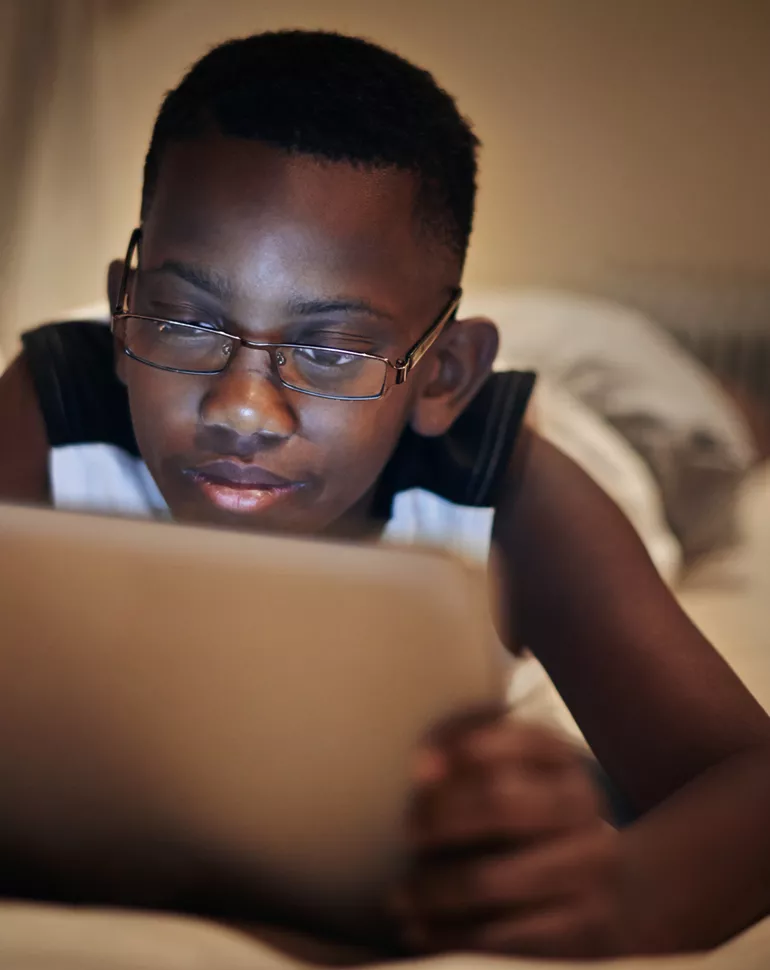Children’s vision problems go undiagnosed because either they don’t know how to express the problems they are experiencing, or their vision issues are showing up in other ways – such as learning difficulties. That’s why it’s so important for your patients to bring their kids in for regular eye exams early on in their development.
Here are some things to consider when discussing children’s eye exams with your patients.
Use sun season and back-to-school season to start the conversation
Now that we’re in the middle of sun season and summer break, it’s a great time to start the conversation with your patients about their children’s eye health and protection from the sun. With children spending more time outdoors during the summer, you can encourage an eye exam and steer the conversation toward the appropriate sunwear for children.
Kids need glasses that are durable and adaptable to their lifestyle – whether it’s scratch-resistance, anti-reflection, 100% UV protection, or polarized lenses. Talk to the parents about the importance of their kids spending enough time outdoors for both their vision and overall health, while protecting against UV light and intense sunlight.
What about other times of year? As summer comes to an end, that’s the perfect time to talk about “prepping for the new school year” – your patients should schedule an eye exam for their children so they can start the school year strong.
How to encourage children’s eye exams
Apart from using the time of year to start the conversation, the best way to encourage patients to bring their children in for a vision test is by driving urgency and educating them on the risks.
You can explain to your patients that childhood vision problems are not easy to detect. While teachers try their best to notice when children are struggling to see, an optometrist is the one who can catch vision or health defects before they get serious. Remind your patients that they can start taking their child for eye exams beginning at 6 months of age and should continue to take them for regular eye exams as they grow. This will help detect or prevent other conditions or eye diseases that can have lifelong effects.
The most common children’s vision problem, for example, is myopia (nearsightedness). Though myopia doesn’t affect reading, it causes blurred distance and impacts the long-term health of the eye.
Signs a child is having trouble seeing
While all children need regular eye exams, here’s a list of signs a child may be having trouble seeing that you can share with your patients to create some urgency around prevention:
- Sitting too close to the TV Following words with a finger while reading
- Difficulty concentrating or focusing during tasks or play Learning or reading difficulties
- Frequent eye rubbing
- Frequent squinting
- Headaches Turning the head to use only one eye
- Irritated and watering eyes
Children’s eye exams: a timeline
It is recommended that all children, whether or not they exhibit the above symptoms, should have regular check-ups to make sure that their vision is developing as it should and screen for potential health problems.
More specifically, according to the American Optometrists Association, a child’s eye exams should take place:
- 6 - 12 months of age
- 3-5 years of age
- Every year thereafter
Children should always have annual eye exams, especially if they wear contact lenses. If your patient’s child has certain risk factors for eye problems, you can recommend more frequent exams.
Preparing your patients’ children for their eye exam
You can support your patients in their eye health journey by explaining what the eye exam entails, what it’s testing, how long it typically takes, and the type of knowledge they’ll walk away with. It’s helpful if you outline some of the tests you conduct in your exam, such as visual acuity, fixation, eye alignment, eye coordination, eye diseases and conditions, signs of refractive error, and eye pressure.
The eye exam may evolve a little from the time they are infants to toddlers to teenagers, but it’s important to try to make it a pleasant (and maybe even fun) experience. One tip for your patients: their children should arrive to their pediatric eye exams well-rested and well-fed for the most productive and pleasant experience.
Prepare patients for the cost. Eye exams are usually covered under most insurance plans, and corrective eyewear for children is often covered or subsidized by extended health benefits. Discuss your patient’s health insurance plan to determine the children’s vision benefits their plan provides – and disclose any extra fees your practice may charge.
Educate patients on children’s lens options
At the end of the day, you’re there to assess a child’s vision health and provide lens solutions that are the best fit. Whether you’re recommending Sensity® 2 light-adaptive lenses to provide comfort and convenience in all light conditions or other HOYA solutions, you’re the ECP. You have answers your patients need after their eye exam.
